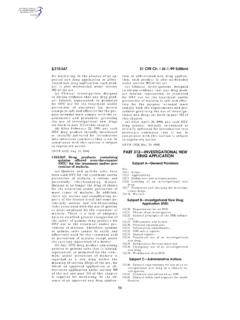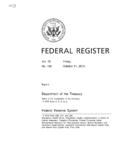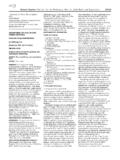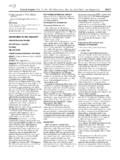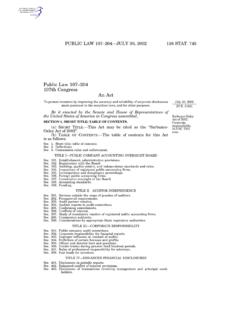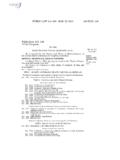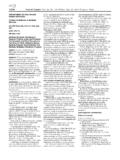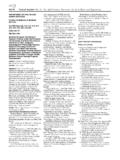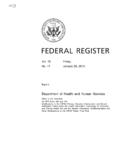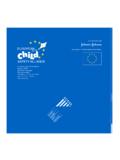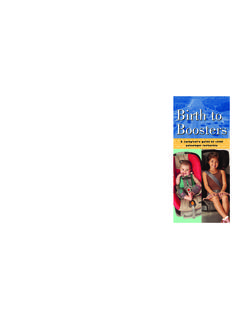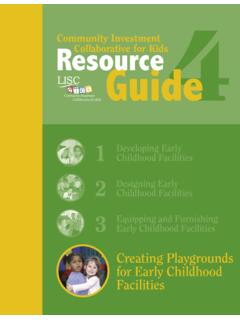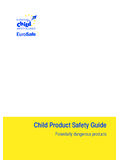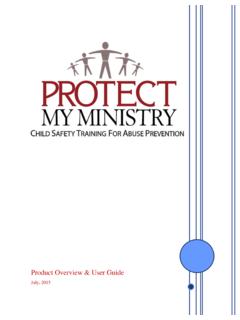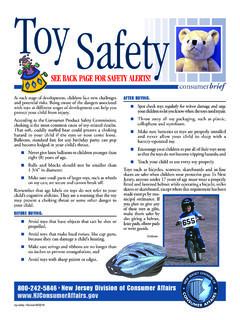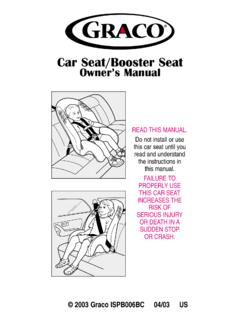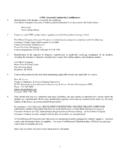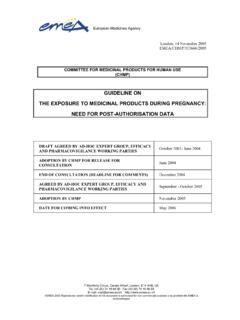Transcription of Consumer Product Safety Commission §1700 - GPO
1 855 Consumer Product Safety Commission EDITORIALNOTE: For FEDERALREGISTERci-tations affecting , see the List of CFR Sections Affected, which appears in the Finding Aids section of the printed volume and at Poison prevention packaging standards. To protect children from serious per-sonal injury or serious illness resulting from handling, using, or ingesting household substances, the Commission has determined that packaging de-signed and constructed to meet the fol-lowing standards shall be regarded as special packaging within the mean-ing of section 2(4) of the act. Specific application of these standards to sub-stances requiring special packaging is in accordance with (a) General requirements. The special packaging must continue to function with the effectiveness specifications set forth in paragraph (b) of this sec-tion when in actual contact with the substance contained therein.
2 This re-quirement may be satisfied by appro-priate scientific evaluation of the com-patibility of the substance with the special packaging to determine that the chemical and physical characteris-tics of the substance will not com-promise or interfere with the proper functioning of the special packaging. The special packaging must also con-tinue to function with the effectiveness specifications set forth in paragraph (b) of this section for the number of open-ings and closings customary for its size and contents. This requirement may be satisfied by appropriate technical eval-uation based on physical wear and stress factors, force required for activa-tion, and other such relevant factors which establish that, for the duration of normal use, the effectiveness speci-fications of the packaging would not be expected to lessen. (b) Effectiveness specifications.
3 Special packaging, tested by the method de-scribed in , shall meet the fol-lowing specifications: (1) child -resistant effectiveness of not less than 85 percent without a dem-onstration and not less than 80 percent after a demonstration of the proper means of opening such special pack-aging. In the case of unit packaging, child -resistant effectiveness of not less than 80 percent. (2) Ease of adult opening (i) Senior- adult test. Except for products specified in paragraph (b)(2)(ii) of this section, special packaging shall have a senior adult use effectiveness (SAUE) of not less than 90% for the senior-adult panel test of (a)(3). (ii) Younger-adult test (A) When ap-plicable. Products that must be in aer-osol form and products that require metal containers, under the criteria specified below, shall have an effective-ness of not less than 90% for the young-er-adult test of (a)(4).
4 The sen-ior-adult panel test of (a)(3) does not apply to these products. For the purposes of this paragraph, metal containers are those that have both a metal package and a recloseable metal closure, and aerosol products are self- contained pressurized products. (B) Determination of need for metal or aerosol container (1) Criteria. A Product will be deemed to require metal con-tainers or aerosol form only if: (i) No other packaging type would comply with other state or Federal reg-ulations, (ii) No other packaging can reason-ably be used for the Product s intended application, (iii) No other packaging or closure material would be compatible with the substance, (iv) No other suitable packaging type would provide adequate shelf-life for the Product s intended use, or (v) Any other reason clearly dem-onstrates that such packaging is re-quired.
5 (2) Presumption. In the absence of con-vincing evidence to the contrary, a Product shall be presumed not to re-quire a metal container if the Product , or another Product of identical com-position, has previously been marketed in packaging using either a nonmetal package or a nonmetal closure. (3) Justification. A manufacturer or packager of a Product that is in a metal container or aerosol form that the manufacturer or packager contends is not required to comply with the SAUE requirements of (a)(3) shall provide, if requested by the Com-mission s staff, a written explanation of why the Product must have a metal container or be an aerosol. Manufac-turers and packagers who wish to do so 856 16 CFR Ch. II (1 1 12 Edition) voluntarily may submit to the Com-mission s Office of Compliance a ra-tionale for why their Product must be in metal containers or be an aerosol.
6 In such cases, the staff will reply to the manufacturer or packager, if re-quested, stating the staff s views on the adequacy of the rationale. (c) Reuse of special packaging. Special packaging for substances subject to the provisions of this paragraph shall not be reused. (d) Restricted flow. Special packaging subject to the provisions of this para-graph shall be special packaging from which the flow of liquid is so restricted that not more than 2 milliliters of the contents can be obtained when the in-verted, opened container is taken or squeezed once or when the container is otherwise activated once. (Secs. 2(4), 3, 5, 84 Stat. 1670 72; 15 1471(4), 1472, 1474) [38 FR 21247, Aug. 7, 1973, as amended at 60 FR 37734, July 21, 1995] Testing procedure for special packaging. (a) Test protocols (1) General require-ments (i) Requirements for packaging.
7 As specified in (b), special pack-aging is required to meet the child test requirements and the applicable adult test requirements of this (ii) Condition of packages to be tested (A) Tamper-resistant feature. Any tam-per-resistant feature of the package to be tested shall be removed prior to testing unless it is part of the pack-age s child -resistant design. Where a package is supplied to the Consumer in an outer package that is not part of the package s child -resistant design, one of the following situations applies: (1) In the child test, the package is removed from the outer package, and the outer package is not given to the child . (2) In both the adult tests, if the outer package bears instructions for how to open or properly resecure the package, the package shall be given to the test subject in the outer package.
8 The time required to remove the pack-age from the outer package is not counted in the times allowed for at-tempting to open and, if appropriate, reclose the package. (3) In both the adult tests, if the outer package does not bear any in-structions relevant to the test, the package will be removed from the outer package, and the outer package will not be given to the test subject. (B) Reclosable packages adult tests. In both the adult tests, reclosable pack-ages, if assembled by the testing agen-cy, shall be properly secured at least 72 hours prior to beginning the test to allow the materials ( , the closure liner) to take a set. If assembled by the testing agency, torque-dependent closures shall be secured at the same on-torque as applied on the packaging line. Application torques must be re-corded in the test report.
9 All packages shall be handled so that no damage or jarring will occur during storage or transportation. The packages shall not be exposed to extreme conditions of heat or cold. The packages shall be tested at room temperature. (2) child test (i) Test subjects (A) Se-lection criteria. Use from 1 to 4 groups of 50 children, as required under the se-quential testing criteria in table 1. No more than 20% of the children in each group shall be tested at or obtained from any given site. Each group of chil-dren shall be randomly selected as to age, subject to the limitations set forth below. Thirty percent of the children in each group shall be of age 42 44 months, 40% of the children in each group shall be of age 45 48 months, and 30% of the children in each group shall be of age 49 51 months. The children s ages in months shall be calculated as follows: (1) Arrange the birth date and test date by the numerical designations for month, day, and year ( , test date: 8/ 3/1990; birth date: 6/23/1986).
10 (2) Subtract the month, day, and year numbers for the birth date from the re-spective numbers for the test date. This may result in negative numbers for the months or days. ( , 8 03 19906 23 19862204//// (3) Multiply the difference in years by 12 to obtain the number of months in the difference in years, and add this)
